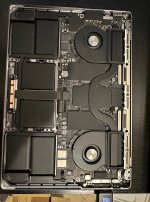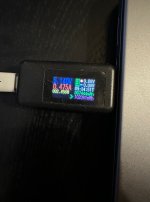Hi all,
I’m working on a MacBook Pro 14” 2021, board 820-02098, no power.
I’ve been focusing on the PP1V8_AWAKE rail which seems problematic.
Here is what I’ve tested:
I’m working on a MacBook Pro 14” 2021, board 820-02098, no power.
I’ve been focusing on the PP1V8_AWAKE rail which seems problematic.
Here is what I’ve tested:
- Symptoms:
- Board does not power up.
- Power-in: ~5.1 V / 0.47 A (~2.45 W)
- With thermal camera, U2020 was initially hot (>70 °C).
- Measurements:
- Resistance to GND @ C2021 / C2030 / C2041 = ~4.0 Ω (meter probes zeroed).
- Same reading in diode mode.
- Voltage with board powered:
- PP1V2_AWAKE = 1.2 V (OK)
- PP1V8_AWAKE = only ~1.55 V instead of 1.8 V.
- Isolation steps:
- Removed bulk caps C2021, C2030, C2041, C2010 → resistance unchanged (~4 Ω).
- Removed U2030 & U2040 (SN74AVC1T45 level shifters) → unchanged.
- Removed U2020 → unchanged.
- Removed LR501 / LR502 → codec side high resistance, but PP1V8_AWAKE side still ~4 Ω.
- Injected 1.5 V / 3 A at C2041: current flows, but no clear hotspot. (did not sink the full 3 A – the power supply stayed in CV mode with around 0.4 A draw)
- Only U2010 (MX25U6472F SPI flash) warms slightly (~40 °C).
- U2000 (second SPI flash) not yet removed.
- Other caps tested/removed → no change.
- Current status:
- PP1V8_AWAKE undervolts to ~1.55 V.
- Rail resistance still ~4 Ω.
- Only U2010 shows activity under injection (light heating).
- After removing U2010, the resistance on PP1V8_AWAKE → GND increased from ~4 Ω to ~8 Ω.
- Power injection at 1.5 V/ 3 A at C2041→ ~0.15A (CV), no visible hotspot (thermal + IPA).
- U2010 off-board: VCC–GND ≈ 6 Ω → clearly leaky; will replace.
- U2000 off-board measured high resistance; reinstalled → rail still ~8 Ω.
Attachments
Last edited:




